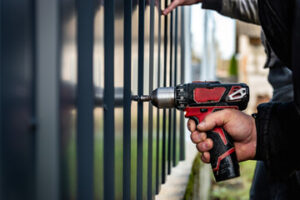How to Start a Fence Installation
When installing a fence, there are several factors to consider. These include the time frame, cost, and materials. Before you begin, make sure you have all of these factors sorted out. This will help you get the most out of your new fence and avoid a lot of headaches later.

There are several factors to consider before installing a fence. For example, the climate of the area you live in will affect the type of material you choose, as will the installation process. For example, if you live in a colder climate, you will likely need concrete anchors to secure the posts, and you will probably want to avoid using wood. Furthermore, some types of metal can rust more easily than others. You will need to research local building regulations and codes to ensure that your fence won’t encroach on other people’s property. In some areas, you might not be allowed to build a fence near a sewer or a water source.
In addition to fencing, you must also consider the height of the fence. Make sure to build your fence above the top of your neighbor’s property line to avoid creating a rift between you and your neighbor. Moreover, you should also ask your neighbors for their permission before installing a fence on their property.
Finally, check if you’re required to obtain a building permit. Some places have stricter regulations about the height, materials, and design of fences than others, so check your neighborhood’s rules before starting construction. If your property has a homeowners association, you should notify them of your plans for a fence. If you live in a subdivision, you should check if the property is zoned for building or not.
A fence can enhance the appearance of your property, provide privacy, and protect you and your children. You can choose to build a fence yourself or hire a professional to help you. Before starting the installation, make sure you understand all of the aspects and benefits of a fence. This will make your fence installation a success.
The purpose of the fence is the most important factor to consider. Depending on your needs, a simple chain-link fence might suffice. However, if you need a sturdy fence to protect against noise or other intruders, you should choose a tall, solid fence.
Fence installation costs depend on several factors, including the type of materials and the complexity of the installation. For example, uneven ground or higher-graded land requires more work and can increase the cost of the project. In these cases, contractors must adapt the fence components to the grade, which can add another $200-$400 to the final cost. Uneven land can also be expensive, costing anywhere from $900 to $3,000 for each linear foot.
Other factors that affect fence cost include the type of material used and the design. An elaborate design is a great way to boost curb appeal but may add to the cost of installation. Different fence materials are available, including vinyl, wood, concrete, PVC, and metal. The grade of the material will determine the final cost, as higher-grade materials will last longer than lower-grade ones.
Some homeowners decide to perform the installation themselves, but this process is time-consuming and prone to complications. If it’s your first time, consider hiring an experienced fence installation company. This way, you can avoid hidden costs and unnecessary time delays. A professional fence installation contractor can also be more accurate in estimating the materials and labor costs.
Wooden fences can cost anywhere from $10 per linear foot to $30 per linear foot, depending on the material and design. Pressure-treated pine and cedar fences fall on the lower end of this price range, while chain-link fences cost between $8 and $12 per linear foot. Vinyl fences, aluminum fences, and wrought-iron fences cost anywhere from $25 to $40 per linear foot.
If you are installing a fence, it’s best to get a building permit first. Depending on the state, a building permit may cost anywhere from $25 to $200. Typically, you’ll need to submit a sketch of your fence and some photos of your property before applying for the permit. In some cases, you’ll also need a land survey. This will ensure that your fence is on your own property and not on someone else’s.
